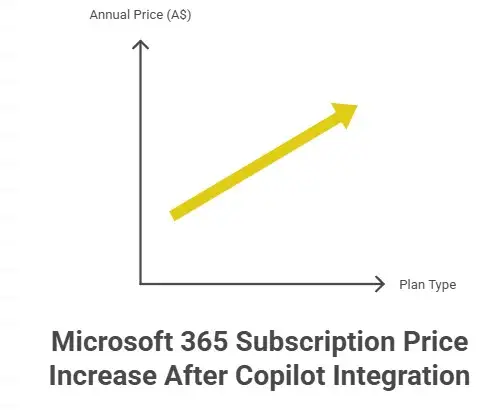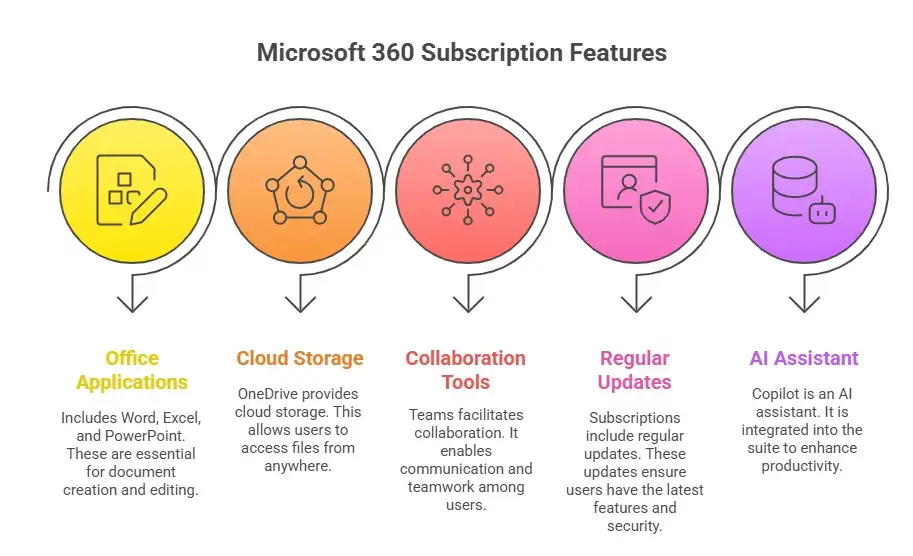Microsoft 365 Lawsuit Exposes Hidden Subscription Trap

Hoplon InfoSec
29 Oct, 2025
In a startling legal move, Techsoft Corporation finds itself in hot water. The case revolves around the Microsoft 365 (often colloquially called “Microsoft 360 subscription”) subscriptions, where they are alleged to have been manipulated into accepting upgraded plans without being properly informed of simpler, lower-cost alternatives. The implications extend far beyond a typical software billing issue: this could radically affect how subscription models are regulated, how consumers make choices, and how big tech firms disclose their pricing and bundling strategies.
Why does this matter? If you or someone you know subscribes to productivity suites, cloud storage, or software platforms, you’re part of a system where transparency should be a given but may not be. For anyone who values clarity in billing, ease of switching, and fair access to digital tools, the unfolding saga around the Microsoft 360 subscription is more than just tech news; it’s
The Lawsuit at a Glance
What is being alleged?
The Australian Competition & Consumer Commission (ACCC) has launched legal action against Microsoft, claiming the company misled approximately 2.7 million Australian users of personal and family subscriptions Microsoft 365.
The core allegation: when Microsoft introduced its AI assistant Copilot into Microsoft 365, users were told they either (1) accept the new, pricier version of their subscription, allegedly, or (2) lose their subscription altogether. They weren’t clearly informed that a third option existed: a “Classic” plan without Copilot at the older, lower price.
Price hikes and timing
· The personal plan for Microsoft 365 increased by 45 subscriptions, or 9%, to A$159 annually in Australia after Copilot was integrated.
· The family plan rose by 29% (from $139 to $179 annually).
· Microsoft’s communications: emails and a blog post notifying auto-renew participants that “to maintain your subscription, you must accept the integration of Copilot and the higher price or cancel.”

Why it matters
From a consumer standpoint, the allegation is that Microsoft controlled how options were presented in such a way that most users did not realize there was a viable alternative plan at the older price. The regulator argues that this diminished their ability to make an informed choice.
From a business ethics and regulatory perspective, this case touches on bundling, transparency in subscription models, and how “value-added” features (like AI assistants) are communicated when pricing is raised. As one analyst said, when vendors bolt on new features and raise prices, “AI has to prove its value. Its value cannot be assumed and charged as a value-add when no or little value has been, in fact, added.”
The Subscription Model: What End‐Users Need to Understand
What is a Microsoft 360 Realize365 subscription?
Though technically the term used here is Microsoft 365 (“Microsoft 365 subscription” or “Microsoft subscription”), many consumers speak of a “Microsoft 360 subscription” when referring to their monthly/annual Office cloud suite license. This typically includes:
· Office applications such as Word, Excel, and the subscription “Excel and PowerPoint”
· Cloud storage via OneDrive
· Collaboration tools like Teams
· Regular updates, and in the case in question, an AI assistant (Copilot) integrated into the suite.
When pricing or features change, as alleged in this case, every user with auto-renewal enabled is potentially affected, even if they were unaware.

Bundling and hidden options
This case highlights two subscription pitfalls: subscription pitfalls:
1. Bundling of new features and price subscription pitfalls: features and price increase: A plan upgrade (Copilot) bundled with a price hike leaves less obvious the fact that a cheaper version remains.
Invisibility of alternate plans: If the “Classic” option (without Copilot) exists but is only visible via the cancellation process, users are less likely to discover it. The ACCC says that users could only see the Classic features and price when they started to cancel, not in the standard renewal communications.
Real-life example
Imagine you subscribe to “Office Suite Standard.” The userStandard.” You receive an email: “Your renewal price will increase next month because we’ve added a new smart assistant to help you write, create, and manage standard files.” You assume you must accept the new version because your workflow depends on the Office apps. You click “Continue,” create “Continue,” and your card is charged at the higher rate. Later, you discover you could have kept your same features for the old price by switching to a “Classic” plan or “Continue” plan, but you were never told that during renewal. That’s exactly what the ACCC alleges occurred.
Why Guarantees of Transparency Matter
Consumer rights and informed decisions
Regulators expect companies to provide clear information about:
· The existence of all subscription options
· Any price changes and what they entail
· The consequences of not choosing a higher-priced plan
If a company fails to disclose viable alternatives, consumers may end up making a suboptimal choice simply because they weren’t aware of other options. The ACCC argues that Microsoft’s communications “denied its customers the opportunity to make informed decisions about their subscription options.”
Business consequences
For Microsoft, the outcome could be significant: the ACCC is seeking declarations, injunctions, orders for consumer redress, and costs. The penalties for each breach are severe, up to A$50 million, or three times the benefit obtained, or 30% of adjusted turnover during the period of breach.
More broadly in the tech industry, this case may set a precedent for how subscription upgrades and bundling are managed globally. If Microsoft is found to have misled customers, others may face closer scrutiny.
The trust factor
When you subscribe to a service, part of the value is the trust you place in the provider: that they will not spring hidden twists, that they will not present twists without precedent, and that they will allow you to pause, downgrade, or choose alternatives. Cases like this erode the broader subscription economy’s credibility.
What This Means for You: A Downgrade, a Checklist for Secure Subscriptions
If you’re using, or considering, any subscription model, especially one like Microsoft’s model, you’ll want to be vigilant. Here’s a practical checklist:
Where the Microsoft Case Stands Now
· Legal proceedings are underway by the Australian regulator. Microsoft has responded that consumer trust and transparency are top priorities and is reviewing the allegations.
· The case does not involve business or enterprise versions of Microsoft 365; it focuses only on Personal and Family plans in Australia.
· While this lawsuit is Australian-based, the model of behavior alleged bundling AI, raising prices, and hiding lower-cost tracks could attract similar investigations globally.
In short, subscribers of Microsoft’s productivity suite should keep a close eye on their plan terms and renewal notices.
Final Thoughts
The saga surrounding the Microsoft 360 subscription case is more than a legal footnote. It underscores a critical point: in an age of pervasive subscription services, consumers must remain alert, and providers must uphold clarity, fairness, and full disclosure. Whether you’re an individual user, a family with a shared plan, or someone navigating cloud software options, what happened here is a lesson in vigilance.
As more companies shift to subscription-first models, you’ll want to ask: Am I getting an informed choice? Am I being told clearly what alternatives exist? And can I choose the version that suits me best without being boxed into a higher tier simply because I wasn’t made aware of a lower-cost one?
If you subscribe to Microsoft’s suite (or anything similar), check your account, check your renewal terms, and don’t assume the only upgrade path is “more ”expensive.”
Action Takeaway: Log in to your subscription management page. Review your renewal date, note any upcoming expensive price changes, and verify if you have a “Classic,” “Basic,” or lower-tier option. It might save you money and ensure you’re making the choice, not falling into it.
Frequently Asked Questions (FAQs)
Q1: What exactly is a Microsoft 360 subscription?
A: The term “Microsoft 360 subscription” is often a casual way users refer to the Microsoft 365 suite. It’s a subscription model offering access to Office apps (Word, Excel, PowerPoint), cloud storage (OneDrive), and collaboration tools (Teams). In the lawsuit, the focus is on personal and family versions of this plan.
Q2: What secondary or alternative plans did Microsoft allegedly hide?
A: According to the regulator, Microsoft offered a “Classic” plan (without the new AI assistant Copilot) at the previous, lower price. The allegation is that this option was not clearly communicated and only appeared if a subscriber initiated cancellation.
Q3: Is this case only about Australia?
A: Yes, the current legal action by the Australian Competition & Consumer Commission (ACCC) applies to Australia and only involves personal/family plans there. However, the described practices of bundling AI upgrades, raising prices, and hiding lower-cost tracks could invite scrutiny in other countries too.
Q4: How did the price change for users with the “Microsoft 360 subscription”?
A: After Copilot was integrated, the personal plan rose by about 45% (from A$109 to A$159) and the family plan by about 29% (from A$139 to A$179 annually) in Australia.
Q5: What can subscribers do now if they believe they were misled?
A: While the case is ongoing, users should check their renewal communications, evaluate whether lower-tier options were available, an,d if necessary, keep documentation of what they were told. Should the case result in consumer redress, having records will help.
Q6: Why is this important for the broader subscription economy?
A: Because subscription services are ubiquitous, from streaming, cloud software, and productivity suites to apps, transparency in pricing, upgrade paths, and user choice underpins trust. When a major company faces allegations of obscured choices, it signals risks for consumers across many platforms.
You can also read these important cybersecurity news articles on our website.
· Apple Update,
For more, please visit our homepage and follow us on X (Twitter) and LinkedIn for more cybersecurity news and updates. Stay connected on YouTube, Facebook, and Instagram as well. At Hoplon Infosec, we’re committed to securing your digital world.
Share this :